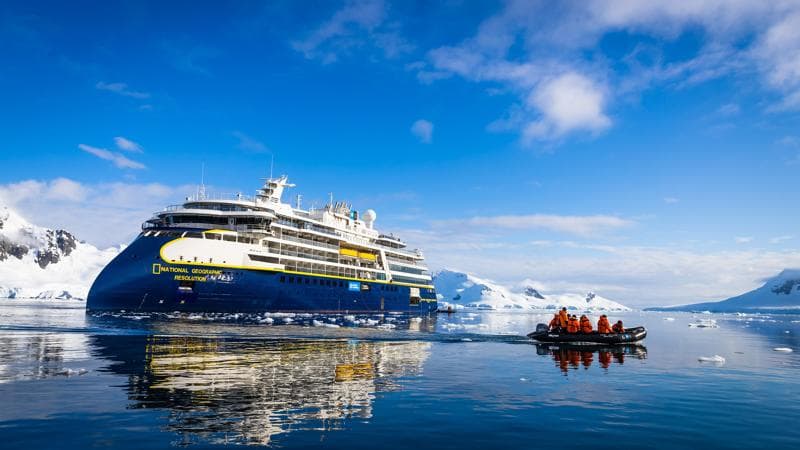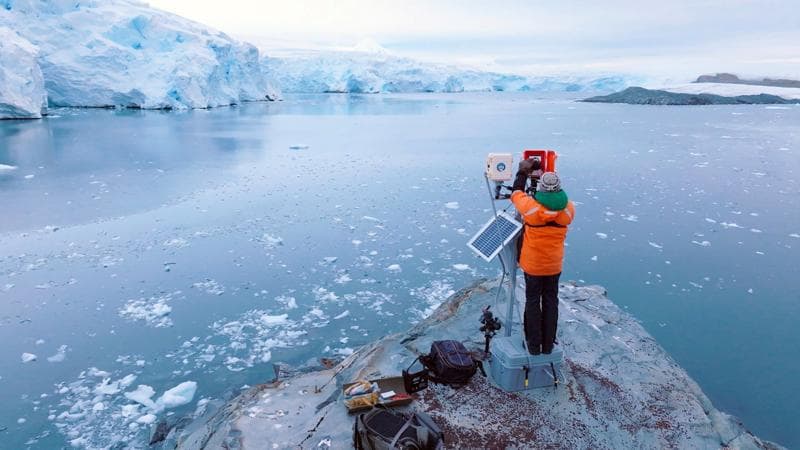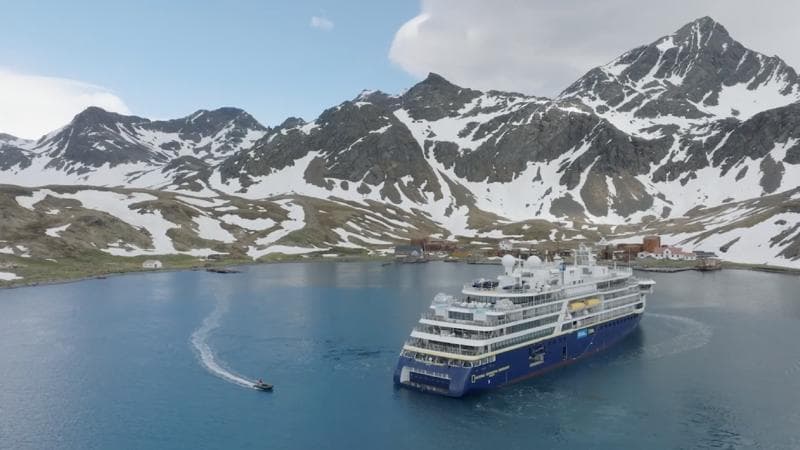In Good Company: A Life at Sea with Captain Heidi Norling
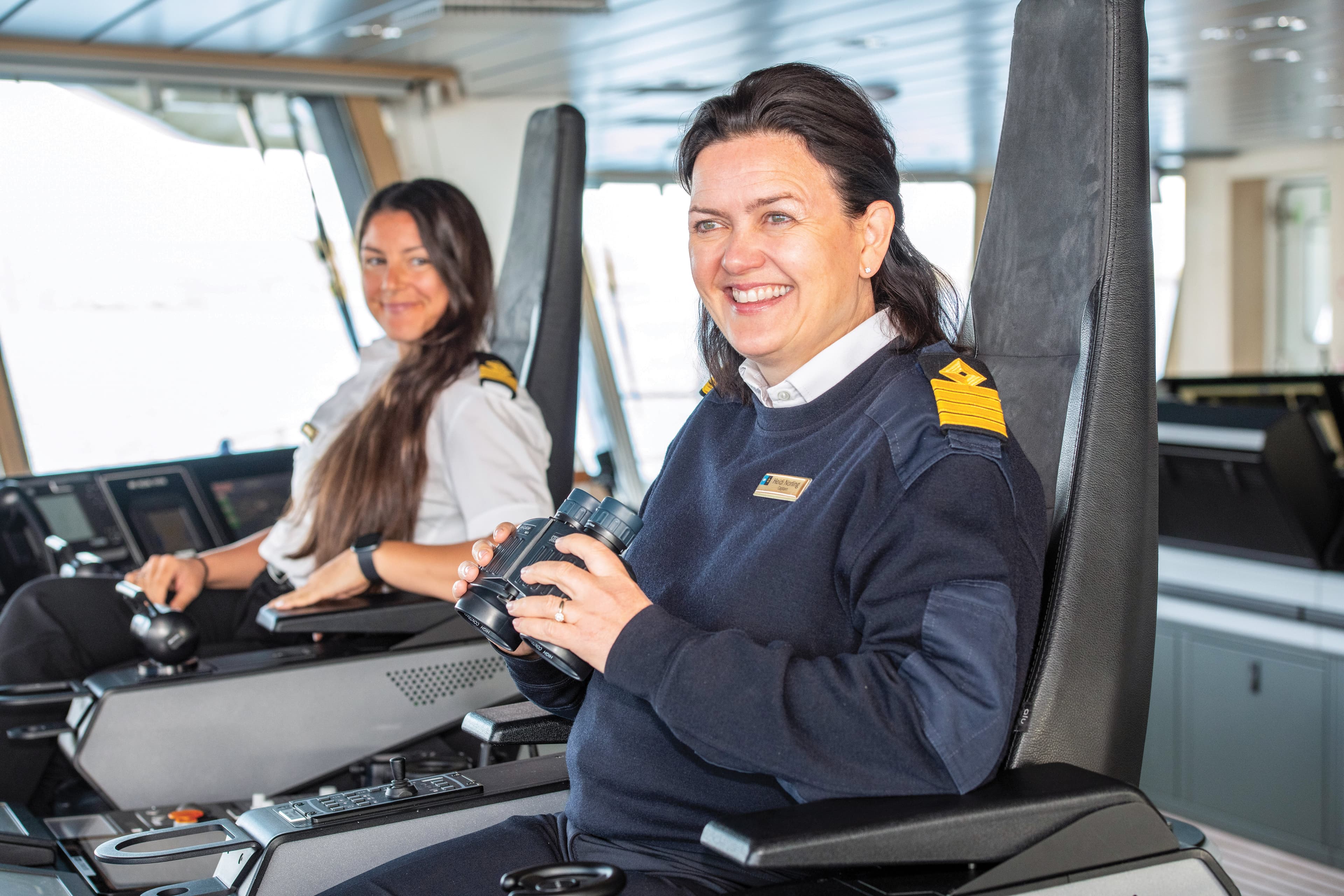
“I will always want to be close to the sea,” declares Captain Heidi Norling. In the decades since graduating from maritime academy, she has realized this dream, moving up the ranks of cargo ships, ferries, and passenger vessels before achieving the role of Captain of the National Geographic Resolution. Here, Captain Norling shares her journey as a mariner and how she became the first female captain for the Lindblad Expeditions-National Geographic fleet.
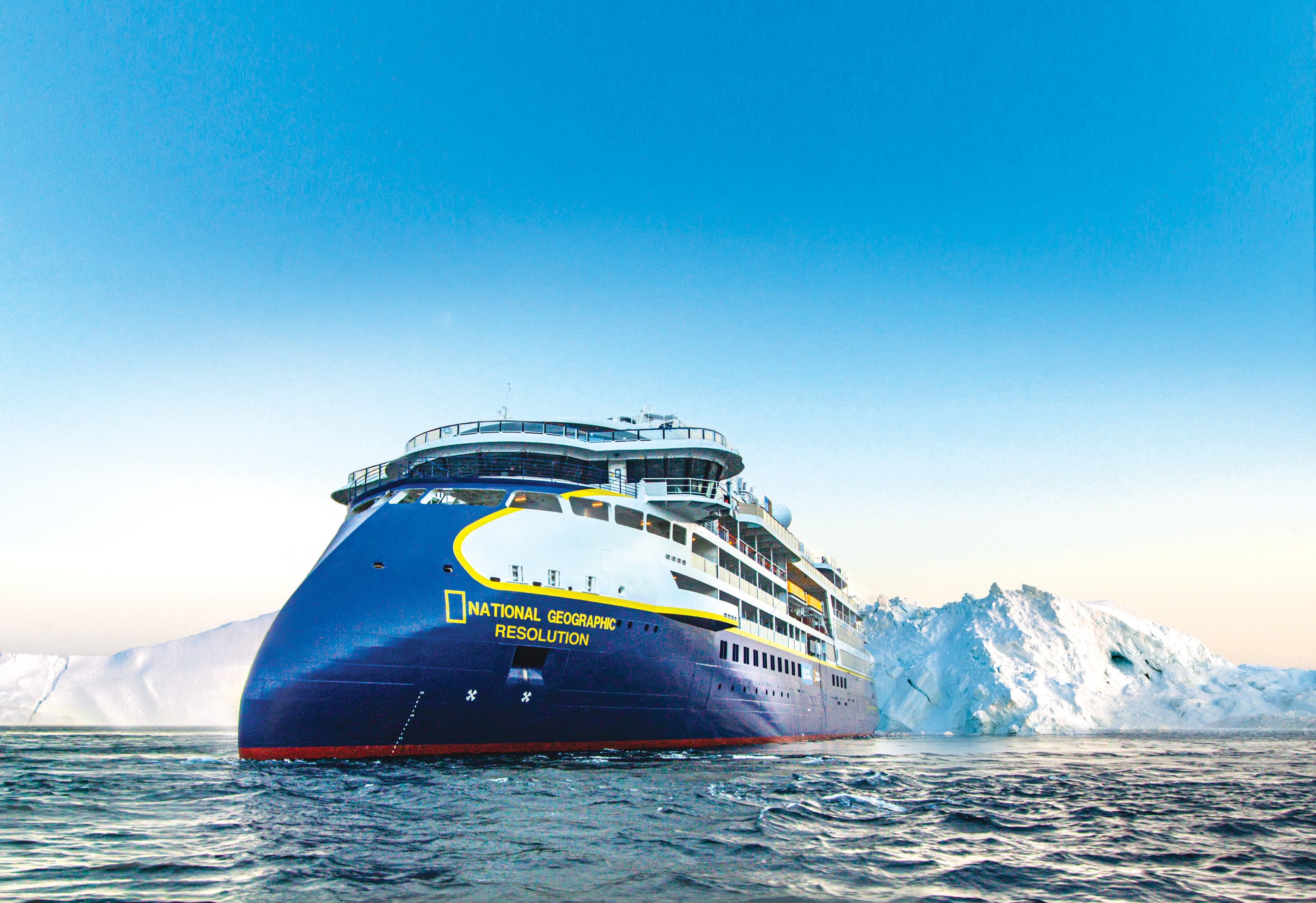
The state-of-the-art National Geographic Resolution, with its uniquely designed X-bow, is Captain Norling's home away from home.
When did you first fall in love with the ocean?
When I was growing up in Sweden, my father had a small sailing boat that we would take out in the archipelago. I would sit with him looking at the charts, and he would say, ‘No, we don't need charts. I know this water—we're close to home.’ And then, boom, we ran aground. After that, the two of us took an evening class on maritime navigation. I learned about nautical chart projections and navigational chart symbols, but most of all I was drawn to the freedom and adventure of being out in nature, on the water.
How did your career begin, and did you dream of becoming a captain?
My main goal was to see the world, and working at sea was a way to achieve that. After attending the Kalmar Maritime Academy, I worked as a cadet on Swedish cargo ships and traveled all over. My first big captain opportunity was for a ferry charter in the Baltic Sea. It was there, in Visby, that I came across my dream ship: the National Geographic Orion. I called the ship’s then captain, Martin Graser, and he offered me the job of staff captain. When Captain Graser eventually left National Geographic Orion, I became captain.
How did you become captain of National Geographic Resolution?
I was still working on National Geographic Orion when I received the call to be second captain on National Geographic Resolution. I was not expecting that—it was an incredible offer to come to a completely new, tailor-made ship. I said, yes please and thank you.
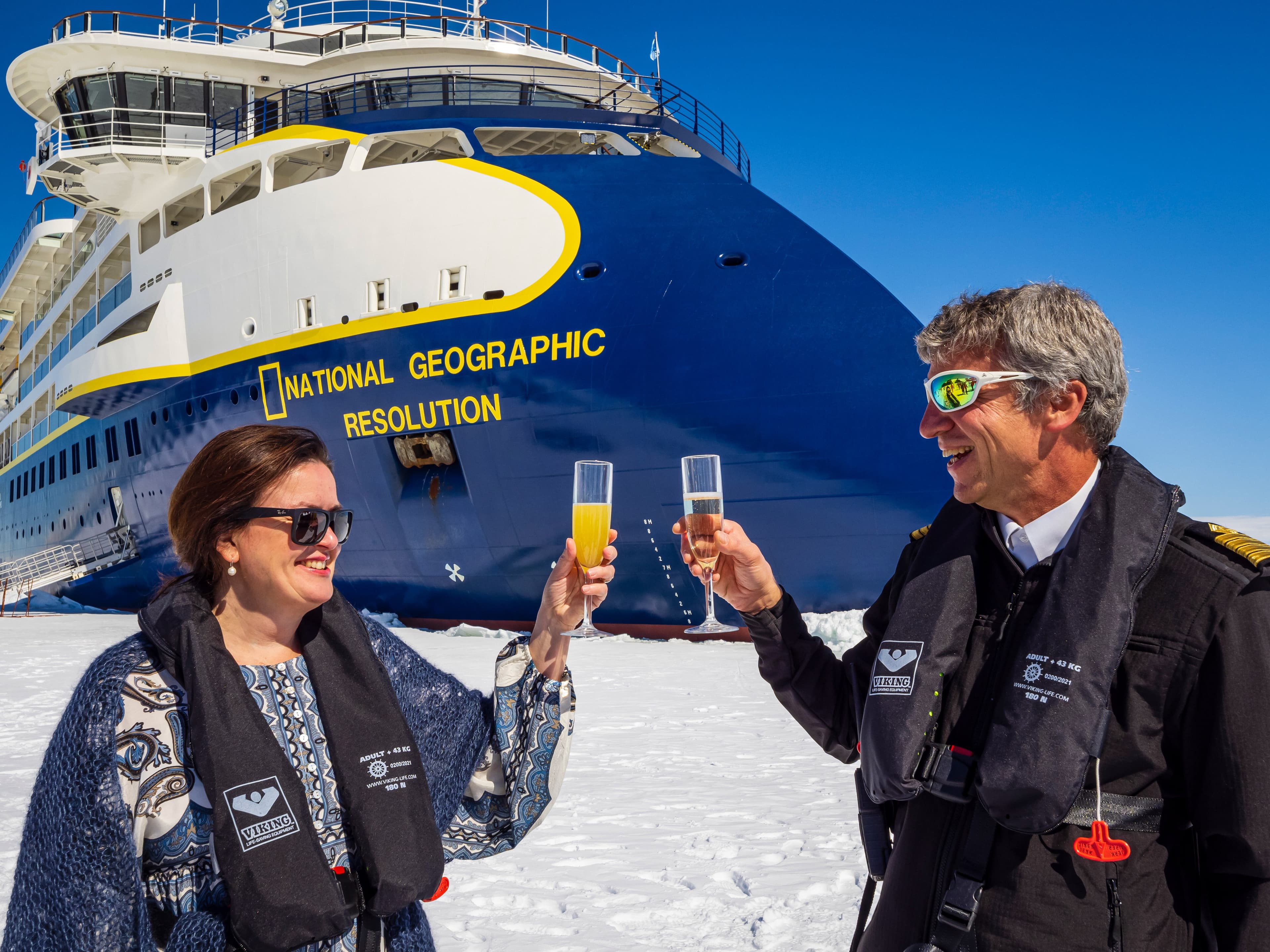
Captain Norling celebrates the christening of the National Geographic Resolution in the Weddell Sea, Antarctica. Photo: Ralph Lee Hopkins
In layman’s terms, how does National Geographic Resolution’s technology facilitate its expeditions?
National Geographic Resolution is a powerful ship designed specifically for polar expeditions and navigating through ice. She has Azipod propulsion, meaning two propellers at the stern can turn the ship 360 degrees around her own axis. For a 124-meter-long ship, this is an impressive feat, and especially useful in icy waters.
The design of the bow is also important—the X-bow is ax-shaped, like a Viking ship. This means when the ship pitches, it will land in a different, softer way. It’s a smoother ride that allows the ship to maintain speed, even when slicing through waves.
How is small-ship expedition travel different from other ways of seeing the world?
There is more freedom, which leads to more adventure. If wildlife is spotted from the deck, for example, we have the flexibility to stop the ship and enjoy the whales or birds. And given the small, nimble scale of our vessels, we can get close to the shore and access narrow, more remote passages. Small ships also foster a more intimate atmosphere. With a small group of guests on board, they can spend more time on shore, and have more contact with the expedition staff, crew, and bridge team.
What has been your favorite expedition?
Antarctica. Each voyage there is special—the ice conditions change, weather varies, the wildlife is different. Whales swim under the ship, penguins approach you when you come ashore. It’s a place that is completely unlike the rest of the world.
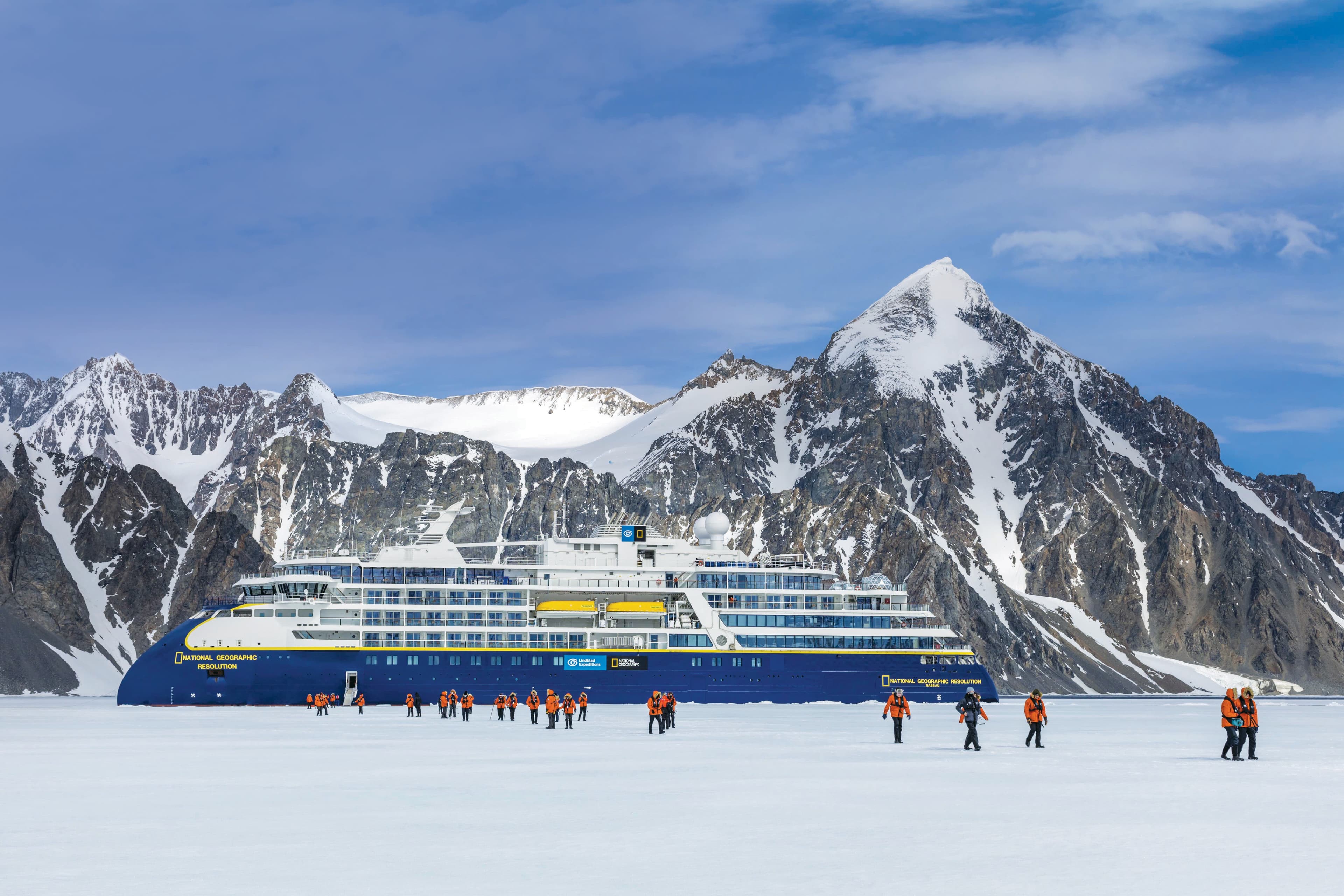
Guests disembark the National Geographic Resolution at Bourgueois Fjord, Marguerite Bay, Antarctica. Photo: Andrew Peacock
When you close your eyes and dream about the perfect expedition, what does it look like?
Perfect weather, beautiful landscape—preferably by some coastal mountains or islands—and of course, you must have unexpected wildlife encounters. You might be looking for whales or penguins, but at that moment you spot them, there is a shared sense of excitement and joy—it’s magic.
In your role as captain, how do you hope to inspire younger women?
At first, I didn’t think about this because I grew up in Sweden, where no one says you can’t do something because you’re a woman. But then I was working on a cargo ship in the Mediterranean. We sailed from Israel to Sweden, and at breakfast one morning I met a forklift driver and his eight-year-old daughter. They were returning from holiday, and she asked me what my job was. When I told her I was a navigational officer, she couldn’t believe it—she said, ‘but you’re a woman.’ I was shocked that a child so young had that kind of vision of what she can and can’t do. That’s when I started thinking it’s good to be visible so people know that women can do this job too.
Featured Itineraries
Related Videos
